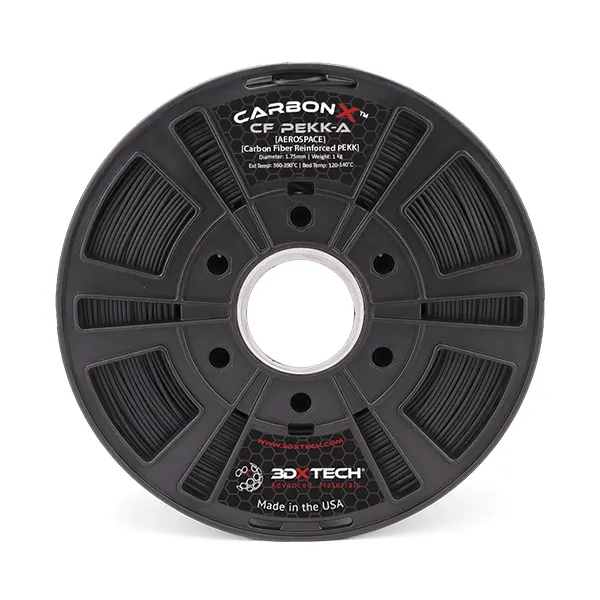
3DxTech Carbon X CF-PEKK-A 500g

CarbonX™ Carbon Fiber PEKK-A (PolyEtherKetoneKetone) aerospace-grade performance is made possible using PEKK (60/40 copolymer) and Toray T-800 aerospace-grade chopped carbon fiber. This combination makes for one of the highest-performance polymer compounds in world.
3DxTech Carbon X CF-PEKK-A 500g

CarbonX™ Carbon Fiber PEKK-A (PolyEtherKetoneKetone) aerospace-grade performance is made possible using PEKK (60/40 copolymer) and Toray T-800 aerospace-grade chopped carbon fiber. This combination makes for one of the highest-performance polymer compounds in world.
CarbonX™ CF PEKK-A [Aerospace] Printing Filament
CarbonX™ Carbon Fiber PEKK-A (PolyEtherKetoneKetone) aerospace-grade performance is made possible using PEKK (60/40 copolymer) and Toray T-800 aerospace-grade chopped carbon fiber. This combination makes for one of the highest-performance polymer compounds in world. A leading material in the PAEK family, PEKK has exceptionally good mechanical, thermal, and chemical resistance properties. It is also not only substantially easier to print than PEEK.
The premium Toray® Aerospace-Grade carbon fiber reinforcement makes this a compound purpose built for extreme applications which require extreme thermal, mechanical, and chemical resistance properties. CarbonX™ PEKK products have a lower melt temperature as well as lower rate and degree of crystallinity than PEEK, which aids in the remarkable ease of printing.
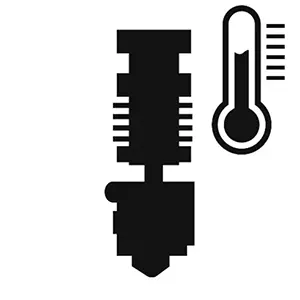
Extruder Temp: 360-390°C
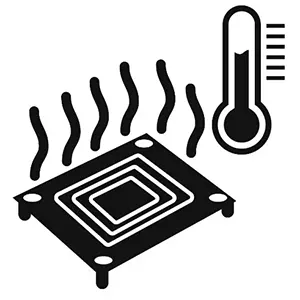
Bed Temp: 120-140°C
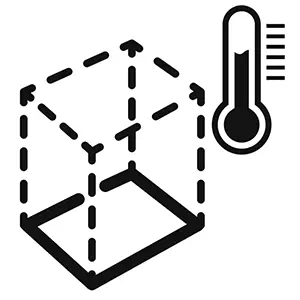
Heated Chamber: Recommended Up to 140°C if possible
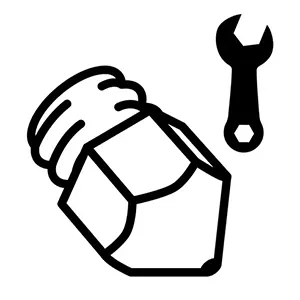
Nozzle Specs: 0.4mm diameter minimum Hardened Steel Nozzle
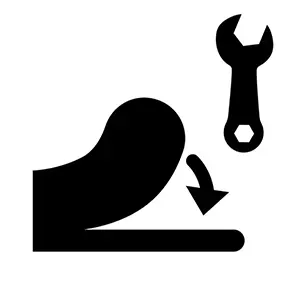
Bed Adhesion: Nano Polymer Adhesive
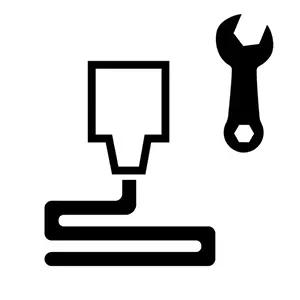
Layer Height: 0.25mm or higher
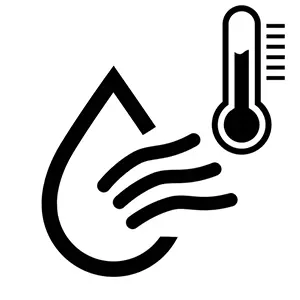
Drying Specs: 120°C for 4+ hours as needed
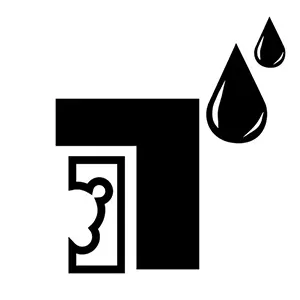
Supports: Break-Away Support
Benefits of CF PEKK-A [Aerospace] Includes:
- Substantially easier to 3D print than PEEK
- Wide processing window from 345-375°C
- Tg of 160°C, HDT of 150°C, and a Tm of 305°C
- Inherently flame resistant (UL94 V-0)
- Low smoke generation
- Outstanding mechanical, thermal, and chemical resistances
TECHNICAL DATA SHEET
Click to open this material’s TDS.
SAFETY DATA SHEET
This material doesn’t yet have a formal SDS
Filament Specifications:
1.75mm +/- 0.05mm in diameter
Recommended Print Settings:
- Extruder: 360-390°C
- Bed Temp: 120-140°C
- Nozzle: We currently recommend a hardened steel nozzle with a minimum diameter of 0.4mm
- Other: Ideal layer height is 60% of nozzle diameter. We do not recommend printing layers smaller than 0.2mm with carbon fiber reinforced filaments
- Bed Prep: Nano Polymer Adhesive or 3DXTECH Polyimide Tape gives us the best results
- Heated Chamber: Recommended, up to 140°C if at all possible.
- Supports: ThermaX™ HTS High-Temp Support is designed to work with complex, high-temp materials like this
- Drying Instructions: 120°C for 4 hours
Carbon Fiber Reinforced Filament
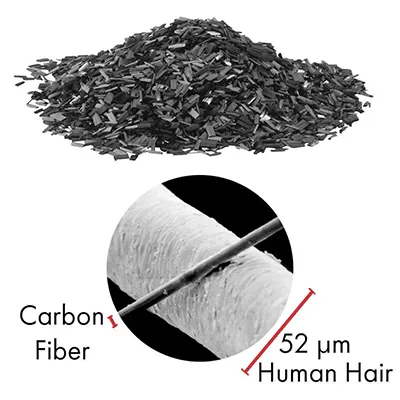
What Is It?
Fibers 5-10 micrometers wide made of carbon. The fibers are aligned following the axis of the material.
This, along with their physical makeup, are what give this material its excellent properties.

What Does It Do?
Carbon Fibers demonstrate a lot of desirable material properties:
- High stiffness
- High tensile strength
- High heat tolerance
- High chemical resistance
- Low weight
- Low thermal expansion
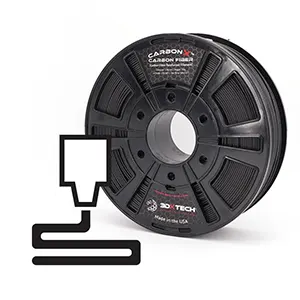
How Does It Work?
Reinforcing plastic with carbon fibers produces a 3D printing filament which exhibits the best properties of both the carbon fibers and the plastic of choice.
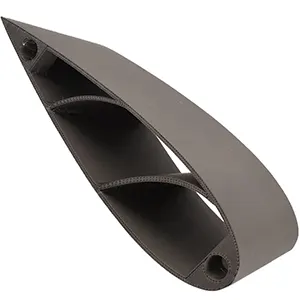
What Is It Good For?
Ideal for any applications which require light weight and rigidity.
Carbon fiber reinforced parts, designed to use less material and save weight, is extremely popular in aerospace, civil engineering, the military, and motorsports.
Abrasive Material
This material is particularly abrasive among 3D printing filaments. Users may find standard brass nozzles are chewed through very quickly compared to standard wear and tear. When worn through, the nozzle diameter will widen inconsistently and the printer will experience extrusion issues.
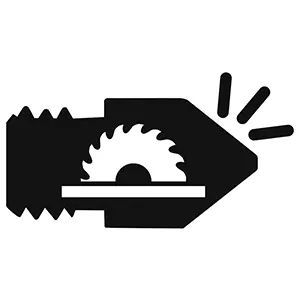
Because of this, it's strongly recommended this material be printed through a hardened steel nozzle rather than a softer metal. Hardened steel nozzles can often be inexpensive and easily installed depending on your printer manufacturer's instructions.
ThermaX™ is a trademark of 3DXTech LLC, its owners, and affiliates
